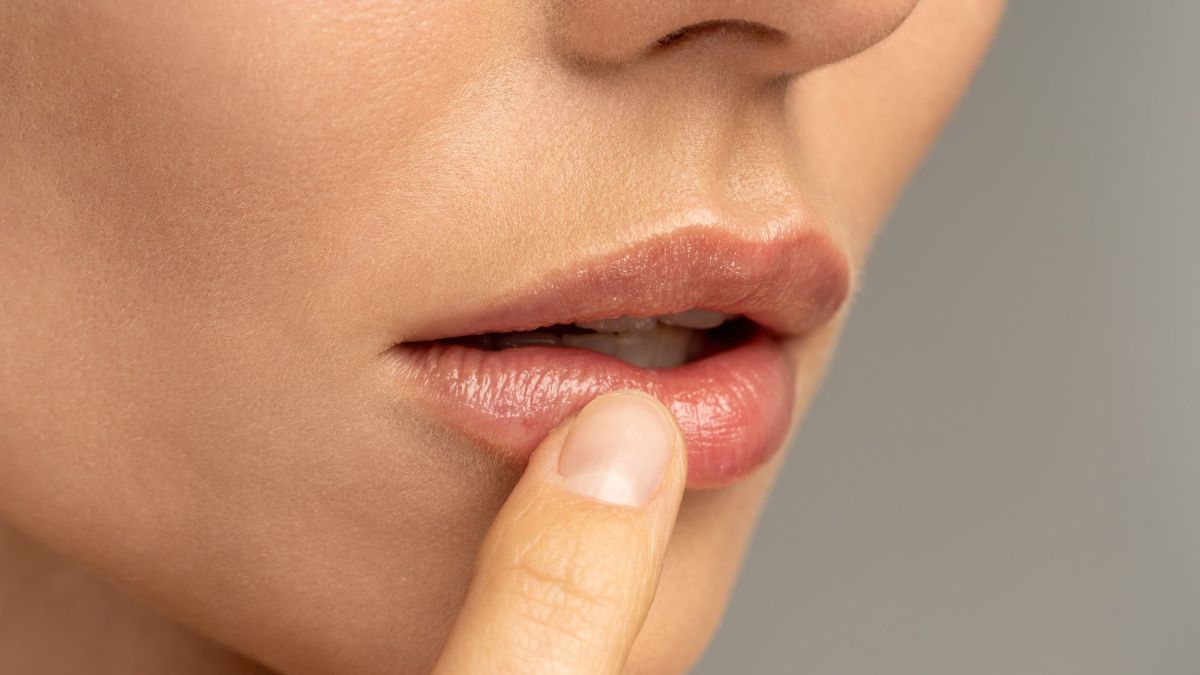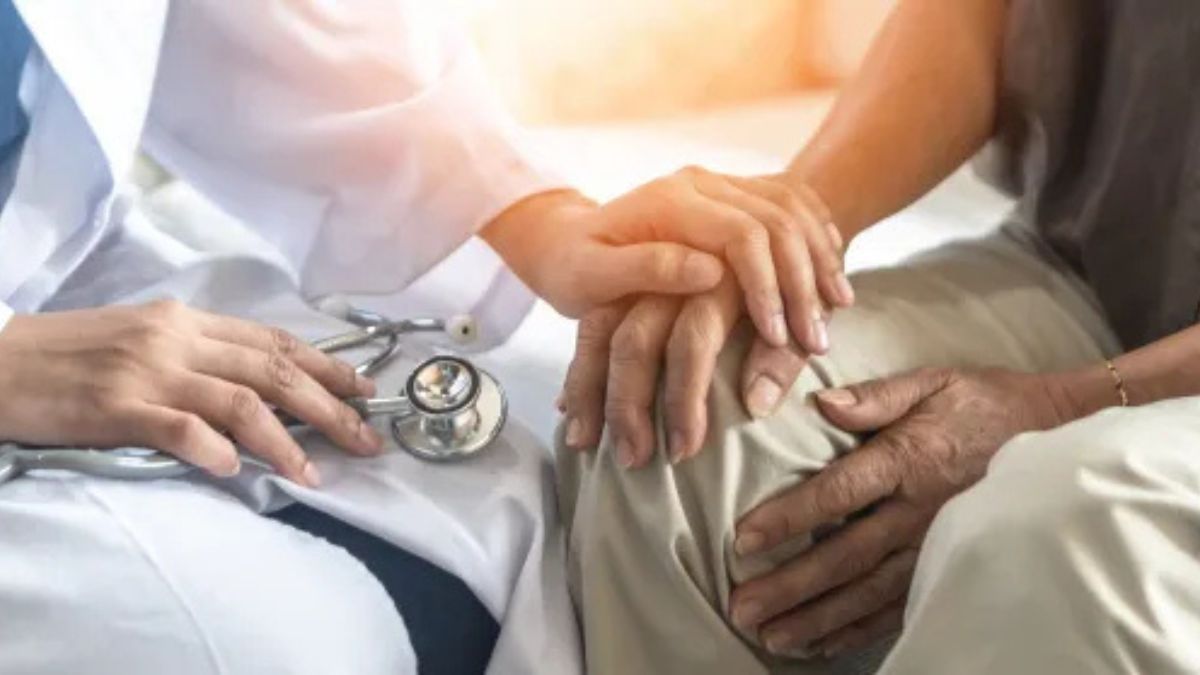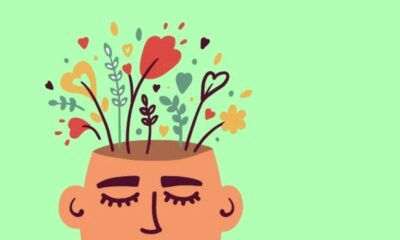HEALTH
Exploring the Different Types of Lip Lift Techniques

Lip lift procedures have gained popularity as a means to achieve a youthful and balanced appearance by enhancing the lips’ proportions and contour. These surgical techniques are especially appealing for individuals looking to reduce the distance between the nose and the upper lip or to improve the visibility of the red lip area. Each type of lip lift technique caters to specific aesthetic goals and anatomical considerations. For a deeper understanding of these procedures, watch video to learn more. Let’s delve into the various lip lift techniques, their unique benefits, and the considerations involved.
The Bullhorn Lip Lift
Also known as the sub nasal lip lift, the bullhorn lip lift is one of the most commonly performed techniques. It involves removing a strip of skin just beneath the nostrils, creating an incision shaped like a bullhorn.
Procedure:
- The surgeon removes a precisely measured amount of skin to shorten the philtrum (the area between the upper lip and the base of the nose).
- The remaining tissue is lifted and sutured, resulting in an upward rotation of the upper lip.
Benefits:
- Enhances the upper lip’s curvature and red lip visibility.
- Creates a more youthful and defined look.
- Minimal scarring, as the incision is hidden under the base of the nose.
Considerations:
- Best suited for individuals with a long philtrum.
- Healing typically takes 1-2 weeks.
The Corner Lip Lift
The corner lip lift focuses on lifting the outer corners of the lips, ideal for individuals with a naturally downturned lip shape.
Procedure:
- Small triangular incisions are made at the corners of the mouth.
- Excess skin is removed, and the corners are lifted to create a more neutral or upward appearance.
Benefits:
- Reduces a sad or stern expression.
- Subtle improvement with minimal downtime.
Considerations:
- Suitable for individuals with drooping lip corners.
- Scarring is minimal and typically blends into the natural creases of the mouth.
The Italian Lip Lift
This technique is a variation of the bullhorn lip lift but involves two small incisions instead of one.
Procedure:
- Incisions are made under each nostril.
- Skin is removed, and the lips are lifted without involving the central part of the philtrum.
Benefits:
- Creates a subtle and natural lift.
- Focuses on enhancing the cupid’s bow without overly shortening the philtrum.
Considerations:
- Ideal for individuals seeking mild enhancement.
- Less scarring compared to other techniques.
The Gullwing Lip Lift
The gullwing lip lift emphasizes the vermilion border (the edge of the colored part of the lip) to enhance the upper lip’s prominence.
Procedure:
- An incision is made along the vermilion border.
- A thin strip of skin is removed, and the lip is advanced upward.
Benefits:
- Improves the definition of the vermilion border.
- Enhances the lip’s fullness and contour.
Considerations:
- More noticeable scarring compared to other techniques.
- Best suited for individuals seeking a dramatic enhancement of the upper lip.
The V-Y Lip Advancement
This technique is often used to augment the upper lip’s volume and definition.
Procedure:
- Small V-shaped incisions are made inside the lip.
- The incisions are closed in a Y-shape, advancing the lip tissue outward.
Benefits:
- No visible external scars.
- Effectively enhances the lip’s volume.
Considerations:
- Ideal for individuals seeking volume rather than shortening the philtrum.
- Healing may involve temporary swelling.
Choosing the Right Technique
Selecting the appropriate lip lift technique depends on individual anatomy, aesthetic goals, and the advice of a qualified surgeon. Factors such as philtrum length, lip shape, and skin elasticity play a crucial role in determining the best approach. Consulting with a board-certified plastic surgeon ensures a tailored plan that aligns with the desired outcomes.
Recovery and Aftercare
Recovery from a lip lift typically involves:
- Swelling and bruising for the first week.
- Stitches removal within 5-7 days, if non-dissolvable sutures are used.
- Avoiding strenuous activities for 1-2 weeks.
- Regular application of prescribed ointments to promote healing.
Following post-operative care instructions is essential to achieve optimal results and minimize complications.
Lip lift techniques offer versatile solutions for enhancing the lips’ aesthetics, catering to diverse preferences and needs. Whether it’s to create a fuller pout, improve symmetry, or achieve a youthful balance, understanding the nuances of each technique is vital. With the right surgeon and technique, a lip lift can transform not just your lips but your overall facial harmony.
HEALTH
Medical Alert System Showdown: What To Look For Before You Buy

If you’re aging or caring for elderly relative, you need all the help you can get. It is a full-time job as aging people may require around-the-clock medical care and surveillance.
With work and other personal commitments, you probably can’t always be available when they need you. If you can’t hire a full-time caregiver, you must sign up with a medical alert system. This service dispatches an immediate emergency response to older citizens and medically-challenged individuals in an emergency.
However, before splashing the cash, you must consider certain factors to help you select the best medical alert system. This can save you from future health, financial, and legal issues down the line.
In this article, you will discover two key areas you must look at before buying into a medical alert service.
Medical Device Features
The key feature of medical alert systems is the device. This gadget links the user or client to the monitoring unit designated by the medical service provider. A medical alert device typically comes in two forms: in-home and mobile devices.
The in-home devices are stationed in a location within the user’s domicile. This is where they or their carer can access the device and contact the monitoring center in an emergency. It is ideal for people without serious mobility or health issues that may hinder them from reaching the gadget in an accident.
Unlike the in-home device, mobile medical alert gadgets are for active people. Those who frequently interact with others outside their property will relish this opportunity. They are lightweight, wearable devices you can carry wherever you go without difficulties.
Your lifestyle and other health conditions may determine which gadget you choose. However, you must ensure your final pick has these features before buying.
1. Location Tracking
Some of the top medical alert system providers include location tracking capabilities in their devices. They leverage GPS technology to ensure they don’t lose sight of you or your loved ones in trouble.
With this feature, you or your elderly ones can access timely emergency assistance regardless of your location. The monitoring unit typically updates your location every 30 seconds to ensure you are covered.
2. Extensive Network Coverage
Medical alert systems utilize various connectivity protocols that enable you to access them in emergencies. Some medical alert systems have limited coverage, while the best have extensive network coverage throughout the land. By prioritizing extensive network coverage, your location won’t hinder you from getting help when you need it most.
3. Two-way Communication System
You stand a better chance of getting emergency support quicker when you can effectively communicate with the monitoring center. The gadgets come with a two-way communication system that include a sensitive microphone and high-quality speaker. That way, you can clearly speak with a monitoring specialist, explain your emergency, and receive helpful information in return.
4. Water-Resistant Hardware
Electronic devices typically malfunction in contact with liquids, especially water. Fortunately, medical alert systems now provide wearable gadgets that remain active even after contact with water. You won’t have to take them off when bathing, doing household chores, or engaging in water-related activities like swimming.
5. Fall Detection Technology
According to the Centers for Disease Control and Prevention, a quarter of Americans over 64 report falling yearly. Without timely response, these accidents may lead to malignant, long-term health deficiencies.
Fortunately, the top medical alert systems now include fall detection features in their gadgets. With this technology, the monitoring team receives a warning signal once the device’s sensor perceives a sudden, strong impact. That way, unconscious people can still access emergency support without contacting the helpline.
Medical Device Pricing
In addition to device features, pricing or service costs are key factors to consider before you buy into this service. It can help you avoid money traps that may tie you to a service longer than you want. So, ensure the following:
1. No Activation Fees
Be sure the service provider doesn’t charge for activating the emergency call button upon signing up. While they might want to justify the activation fee, it is unnecessary as some of the best services don’t accept these charges.
2. Zero Hidden Charges
Some medical alert service providers get more money from clients through unethical means. To avoid being these individuals, ensure that there are no surprise charges during or after partnering with a medical emergency system.
3. No Long-Term Contracts
Be wary of companies that offer contracts before activating your emergency call button. Some services still require their clients to sign long-term contracts that tie them down to the company. It can be frustrating, especially when you can’t migrate to a better service for fear of legal consequences.
4. Promotions and Discounts
Once you avoid companies with unethical practices, you may look for those with money-saving promotions that make it easier to continue accessing emergency solutions. The best services in the country offer promos during special occasions and discounts. These discounts can significantly reduce your monthly fees in the long run, easing financial anxiety.
5. Lifetime Warranty
In addition to promos, ethical services offer a lifetime warranty on their emergency devices. That way, you can mail the device to their office if it’s not a perfect fit for you without fear of financial implications.
Conclusion
Medical alert systems provide immediate emergency rescue to your doorstep in your most vulnerable hour. However, you must carefully examine key areas of the system to find ethical and transparent service providers.
Ensure that the service provides gadgets with modern innovation such as GPS and fall detection technology. These features, along with a transparent pricing policy, can set you up for a stress-free experience with medical emergency protection.
Don’t wait until there’s an accident; secure yourself and your aging loved ones with emergency response guaranteed today.
HEALTH
When the Kids Live Far Away and the Worry Runs Deep

Living miles away from aging parents creates a type of worry that is hard to explain. You might call often, send groceries, or book flights when you can, yet still feel that heavy sense of falling short. Late at night, you may wonder if your mom remembered her medication or whether your dad made it safely out of the shower. This feeling is more common than most people talk about and it carries real emotional weight.
Life naturally pulls us in different directions. Jobs, families, and opportunities lead us to plant roots in new cities or even different states. That does not mean your concern fades. It just means your care might need a helping hand. This is where in home caregivers in Illinois at Ace Home Care become part of the solution, bringing compassionate support when you cannot be there in person.
Long-Distance Caregiving Is an Emotional Balancing Act
Even if you are doing your best from afar, there may be times when it feels like too little. Visits reveal changes that catch you off guard, or neighbors mention concerns you had not heard. The guilt grows heavier when you think about the small moments your parent may be missing out on—warm meals, safe routines, or simple companionship. These emotions are valid and worth acknowledging.
What many families discover is that accepting support is not the same as stepping back. It is actually a form of protection—for your loved one and for yourself. Partnering with a care team you trust brings peace of mind and allows your parent to receive hands-on help while you remain their emotional constant.
Support That Adapts to Your Family’s Needs
Home care does not have to start as a major commitment. Many families begin with just a few hours each week to handle light chores, check in on routines, and provide friendly interaction. These moments help build trust and consistency for your parent, especially if they have been doing everything alone for a long time. It is not about replacing your presence—it is about expanding your reach.
Families in Illinois often turn to Ace Home Health Services for their reputation in compassionate and flexible care. Whether your loved one needs help with meals, errands, or a reassuring voice throughout the week, the care plans are customized to meet real daily needs. The caregivers are not just trained professionals—they are thoughtful companions who treat your family with care and dignity.
When Your Parent Says “I’m Fine” but You Know Something Has Changed
It is hard to hear a parent say they are okay when your instincts tell you something is off. They may downplay the laundry piling up or skip meals without mentioning it. Pride and the desire to stay independent can lead them to brush off signs of struggle. That is where listening closely and acting gently becomes important.
Introducing support does not have to feel like a confrontation. It can be framed as a small step forward, starting with tasks that feel manageable and non-intrusive. Ace Home Care specializes in creating a welcoming environment for seniors who may feel hesitant about help. The focus is always on preserving dignity while making daily life a little easier.
Staying Involved, Even from Miles Away
You do not have to be in the same zip code to stay connected to your parent’s care. With the right care team, you will receive regular updates, check-ins, and feedback about how things are going. Technology and good communication can keep you informed and involved every step of the way.
This is where working with an experienced agency like Ace Home Care makes a real difference. Their transparency and compassion help bridge the gap between your concern and your parent’s needs. You are not stepping away from responsibility—you are sharing it with people who truly care.
Knowing When It Is Time to Ask for Help
Recognizing that your loved one needs more support can be difficult, especially when you are not there to witness it daily. These signs can help you assess when to consider home care:
- Frequent missed medications or doctor appointments
- The home appears unkempt or neglected
- You feel constant worry about their safety or routine
- They start withdrawing from social interactions or seem unusually quiet
These changes signal that extra support could be beneficial. Trusting professionals to step in is not about giving up. It is about showing up in a way that makes sense for your family’s reality.
You Are Still Their Anchor
Being far away does not change your role. You are still the person they look to for support, reassurance, and love. Choosing to bring in home caregivers simply strengthens that role by giving it structure and consistency.
With the right care partner, you will gain peace of mind knowing your parent is safe, seen, and supported. It means your time together can focus more on connection than on worry. That shift makes all the difference.
Ready for the Next Step? Let’s Talk
Long-distance caregiving can bring a mix of emotions—guilt, stress, love, and deep responsibility. You do not have to carry it alone. Ace Home Health Services is here to help you find clarity, create a plan, and support your loved one with respect and compassion.
If you have been wondering whether now is the right time to explore in-home care, we are here to listen. One conversation can lead to relief and reassurance. Let’s talk about what your family needs and how we can provide support that honors both your parent’s dignity and your peace of mind.
HEALTH
Advanced Urology Products: Enhancing Patient Care and Comfort

In the realm of healthcare, urological health is a critical aspect that demands attention and utmost care. Urological disorders can be deeply impacting, affecting not only the physiological well-being of individuals but also their psychological comfort and quality of life. It is essential to utilise advanced medical products and technologies to ensure that patients suffering from such ailments receive the best care possible.
The Importance of High-Quality Urology Products
Managing urological conditions often requires long-term treatment and the use of specialised urology products. These products are designed to support various therapeutic procedures, incontinence care, and surgery recovery processes. More than just facilitating medical interventions, high-quality urology products can significantly enhance patient comfort and support overall well-being.
The advancements in urological care have led to the development of products that cater to personalised needs, ensuring that a patient’s individual medical conditions are addressed with precision. These products range from catheters, drainage bags, and urological stents, to sophisticated monitoring systems and surgical instruments. Each innovation is aimed at improving the caregiving process and patient outcomes.
Innovative Features in Urology Products
Modern urology products come equipped with innovative features designed to minimise discomfort and prevent complications. For example, catheters now boast advanced coatings that reduce friction and the risk of infection. Moreover, the design variations ensure that patients of all ages and anatomies can find a comfortable, secure fit.
Furthermore, contemporary drainage bags are designed with anti-reflux valves that prevent urine backflow, which can be a significant cause of urinary tract infections (UTIs). These features underscore the meticulous attention to detail in product design focused on patient safety and comfort.
Impact on Patient Care
The use of these advanced products in the field of urology has revolutionised patient care. They have enabled healthcare professionals to provide more accurate diagnostics and effective treatment plans. The physical and emotional strain on patients is substantially lessened by products that offer greater mobility and autonomy, especially for those dealing with chronic conditions that impair daily functioning.
With constant innovation in urological technology, there is a continuous stream of more user-friendly, less invasive products entering the market. This advances the goal of delivering healthcare that is not just about treating conditions but improving the overall patient experience.
Choosing the Right Urology Products
When it comes to selecting the appropriate urology products, healthcare providers must consider a myriad of factors. These include the patient’s medical history, lifestyle, and the specific urological condition being treated. The objective is to match the patient with urology products that not only address their medical needs but also provide comfort and ease of use.
It is also crucial that these products meet stringent safety and quality standards. Products should be sourced from reputable manufacturers that comply with health regulations to ensure that patients are receiving the best care possible without any added risks.
Education and Support for Patients and Caregivers
Beyond the physical aspects of the products themselves, providing education and support to patients and their caregivers is paramount. Understanding how to use urology products correctly can prevent complications and enhance the effectiveness of treatments. Healthcare professionals play a vital role in offering guidance and resources to ensure that urology products are being used to their full potential.
Future of Urological Health Products
The future of urological health products is promising, with ongoing research and development paving the way for increasingly innovative solutions. Novel materials and technologies are being explored to further improve the functionality and comfort of urology products. Additionally, the integration of smart technology and data analytics holds the potential to revolutionise urological care, offering new insights into patient health and personalised treatment approaches.
In this evolving landscape, staying abreast of the latest developments is vital for healthcare providers. By leveraging these advancements, they can continue to enhance patient care and outcomes in the field of urology.
Conclusion
Urological health is a complex and sensitive area that necessitates the use of advanced urology products. With the right products, patient care in the realm of urology can reach new heights of effectiveness and comfort. As the field continues to grow and evolve, the focus on innovative product development will remain crucial in the pursuit of providing exemplary care to patients with urological conditions. Healthcare providers, patients, and caregivers alike must embrace these advancements and understand their pivotal role in improving urological healthcare.
Whether it’s through the adoption of new technologies or the provision of comprehensive education and support for product use, the goal is clear: to offer a standard of care that is truly patient-centred. The future holds great promise for the field of urology, and through collaborative efforts among researchers, medical providers, and industry players, patient care will continue to advance, ensuring better health and quality of life for those affected by urological conditions.
-

 TECHNOLOGY3 days ago
TECHNOLOGY3 days agoTop 10 Must-Read Stories from Kristen Archives You Can’t Miss
-

 TECHNOLOGY6 months ago
TECHNOLOGY6 months agoSky Bri Net Worth Revealed: How She Built Her Financial Empire
-

 TOPIC8 months ago
TOPIC8 months agoBasement Renovation Contractors: How They Tackle Structural Issues During Renovations
-

 TOPIC2 months ago
TOPIC2 months ago5 Reasons the //Vital-Mag.Net Blog Dominates Lifestyle
-

 TOPIC4 weeks ago
TOPIC4 weeks agoTop 10 Articles from the ://Vital-Mag.net Blog That You Can’t Miss
-

 CRYPTO4 months ago
CRYPTO4 months agoCrypto30x.com Review: Is It the Right Platform for You?
-

 BUSINESS6 days ago
BUSINESS6 days agoTraceLoans Explained What You Need to Know
-

 BUSINESS3 weeks ago
BUSINESS3 weeks agoDecoding the Kennedy Funding Ripoff Report: Facts vs. Fiction
